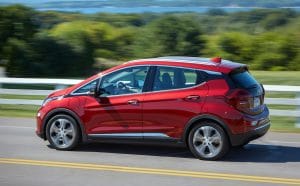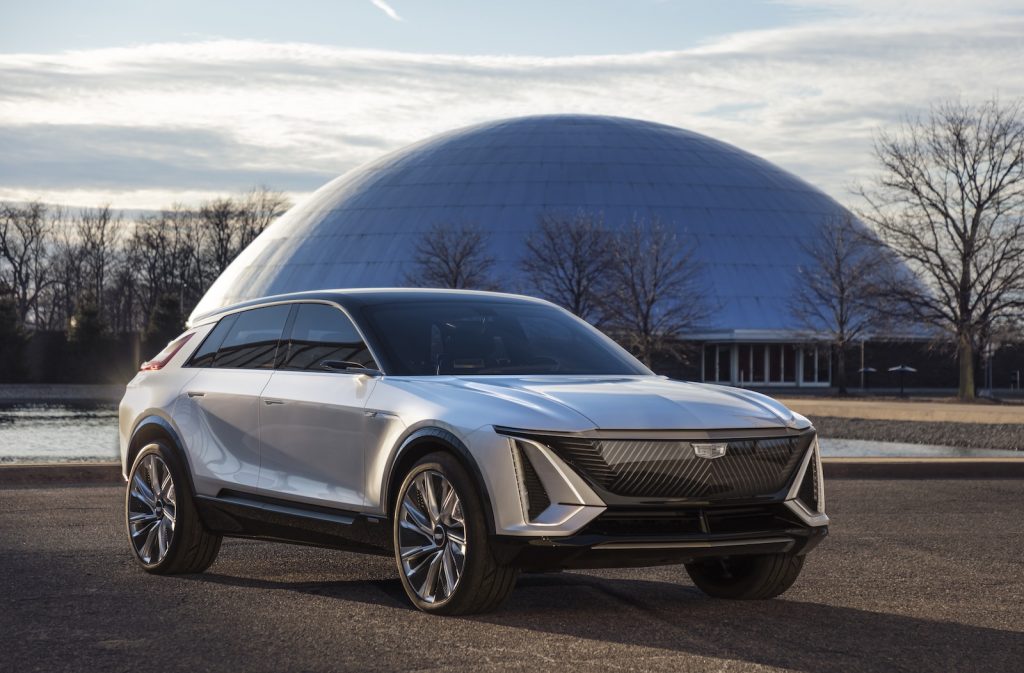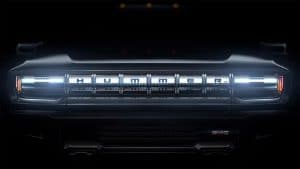It’s not unusual to see a mainstream automaker offer a dozen different engines and engine variants in its line-up of cars, trucks and crossovers.
Going forward, however, General Motors plans to take a very different approach, sharply narrowing down the number of drive units it will use as it moves forward on what it refers to as its “path to an all-electric future.”
The automaker is offering more insight into what it calls its Ultium Drive technology. GM previously revealed that it will produce a new generation of Ultium batteries at a plant near Lordstown, Ohio. Now, it says, they will be used to power a selection of five different Ultium Drive propulsion units that will be found in everything from future compact hatchbacks like the Chevrolet Bolt up to big rigs such as the GMC Hummer pickup and planned commercial delivery vans.
(GMC Hummer to offer “crab mode” — here’s what else we know ahead of Oct. 20 reveal.)
“Making motors, transmissions, driveline components and systems are among GM’s best-known competencies, and our manufacturing expertise is proving not only transferable but advantageous as we make the transition to EVs,” said Ken Morris, GM’s vice president for autonomous and electric vehicle programs, in a release accompanying the announcement.
For more than a century, automakers have viewed their driveline technology as a big advantage and, for GM, it built a reputation on engines like its classic, small-block V-8. In the world of electric vehicles, manufacturers will have to shift gears, so to speak, but the efficiency and performance of their batteries, motors and electronic components could prove critical competitive advantages.
In GM’s case, the automaker currently has just one long-range battery-electric vehicle, or BEV, on the market, the Chevrolet Bolt EV. But it’s getting ready to bring that up to “20 or more” by 2023.
It has confirmed several will be coming in the near future, including a stretched version of the Bolt, dubbed the UEV, as well as the Cadillac Lyriq and the GMC Hummer, a pickup version set to be formally unveiled Oct. 20. A Hummer SUV also is in the works.
With the exception of the current generation Bolt models, all of these EVs will use new Ultium Drive technology, starting with the new, low-cobalt lithium-ion batteries GM will build in Ohio. Propulsion units also will include power electronics, a single-speed transmission and any of three different motors. To improve their efficiency, lower their weight and reduce their size, the electronics and mechanical components will be combined into a single package. Weight, for one thing, will come down by as much as half compared to the system now used in the Bolt, according to GM.
Of course, the Detroit automaker isn’t the only one trying to achieve similar goals. Startup Lucid announced last week that the combined electronics, motor and transmission in its own power unit will weigh in at around 170 pounds and be small enough to fit in the overhead bin on an airliner.

GM will combine power electronics, transmission and one of three new motors into each of the five Ultium propulsion units it is developing.
What’s notably different about electric drive units when comparing them to a gas or diesel powertrain, however, is that they can be used in multiple numbers.
The four different GM electric vehicle platforms under development will have the ability to operate as front-, rear- or all-wheel drive and use anywhere from one to three propulsion units.
(GM forges $2B deal with Nikola to build trucks, develop new electric and fuel-cell technology.)
For now, the automaker isn’t providing details about the five coming propulsion units, though it previously indicated its upcoming BEVs will have power outputs ranging from 235 to 1,000 horsepower. It also noted that the three-motor drive system option for the Hummer will produce more than 11,000 pound-feet of torque.
In today’s announcement, GM appeared to back off of earlier comments suggesting it would turn to an outside supplier for its motors, saying it will “lead design, development and manufacturing of its next-generation EV drive units and motors.”
That could include directly working with a supplier, much as it is doing with its new Ultium batteries. They’re being jointly developed with South Korea’s LG Chem, the partners contributing equally to the new Lordstown plant.

For now, the Chevrolet Bolt and upcoming Bolt UEV will use GM’s older battery and motor drive technology.
Those batteries are expected to sharply reduce the use of cobalt which, in turn, will help meet GM’s target of cutting production costs to around $100 per kilowatt-hour. That’s down from $145 for the batteries it currently buys from LG Chem for the Chevy Bolt. Longer term, GM officials previously indicated they hope to get that down as low as $75.
Battery packs, meanwhile, will run anywhere from 60 kWh in the Bolt up to as much as 200 in the longest-range Hummer. Steve Carlisle, GM’s president of North American operations, said this summer that GM’s goal is to boost optional range to 400 miles or more on all its vehicles, though that’s likely to be more like 200 to 300 initially.
One of the questions raised by GM – but not clearly answered – is whether it might sell the Ultium Drive technology to other manufacturers. GM said last March that it would be open to providing Ultium batteries to outside customers. Morris appeared to hint it could do the same with its motor drive system by noting in a news release how “GM has built transmissions for many notable automakers.” That list has included Rolls-Royce and even Ferrari, in years past.
We do know that GM will provide key propulsion components to startup Nikola Motors as part of a new partnership announced earlier this month. They will be used, among other things, in the Nikola Badger pickup.
(GM highlights innovation in new battery technology.)
All told, GM is planning to invest about $20 billion to electrify its line-up by 2025.


